What is a DJ mixer?

As we have already mentioned, a DJ mixer is one of the essential tools for every disc jockey. Of course, this is not a universal and absolute standard machine. Each DJ has his tastes. Some use other types of mixing consoles; others use DJ controllers. There are even those who choose to use only a computer or other portable devices. The important thing is that you use the system that best suits you. But what is undeniable is that many DJs, both professionals, and beginners, use a DJ mixer as a basic element. So what is its function? A DJ mixer allows you to control and vary the parameters of sound sources.
In other words: thanks to the DJ mixer, we can raise or lower the volume of the soundtracks, adjust the treble or bass, add effects, superimpose audios or go from one song to another with a fade. These are some of the main functions. Of course, the features and utilities of a table can vary from one model to another.
DJ mixer vs. DJ controller
What are the differences between a DJ mixer and a controller? A DJ mixer and a DJ controller are similar tools, although they have important differences. The purpose of both is to mix different audios. However, their main difference is the way they work. A DJ mixer is a device that can be analog or digital to which other devices that reproduce sound are connected.
For its part, the most common is that a DJ controller is used connected to a computer to handle the software installed on it. The controller usually incorporates two decks and two jog wheels as standard (although this is not always the case). Also, they usually have a sound card.
When it comes to DJ mixing consoles, as we’ve seen so far, this is usually the centerpiece of the DJ equipment. We will connect different devices to it, whether they are turntables, CD or MP3 players, portable, or a combination of them. Next, we will show more clearly the main differences between these two devices.
| |
DJ mixer |
DJ controller |
| Software use |
It does not require software to work. |
The most common is that you need software to work. |
| Computer connectivity |
It does not need a computer to function. |
It is usually connected to a computer (although there are models that allow you to connect tablets and smartphones). |
| Connectivity |
We need to connect audio-playing devices for it to work, be it turntables, CD players, or MP3 players. |
Simply connect it to the portable device for it to be operational.
|
| Price |
High-end models are more expensive. |
Although there are very high-end models, there are very inexpensive options.
|
| Experience level |
A large number of professional DJs use this type of table. |
Some professionals also use controllers, either as a complement to their tools or as a single piece of equipment.
|
Features to consider when buying a DJ mixer
Surely you really want to have your new DJ mixer. But to avoid possible disappointments in the future, it is better to take into account specific criteria when choosing a model. Here are some of the most important ones. In this way, it will be easier for you to get the best mixer of 2020.
Type
What kinds of DJ mixers are there? First, we are going to introduce you to the types of existing DJ mixers. They are not too many, but there are several differences that are quite remarkable to pay attention to.
Generic mixer: This is a type of mixer that does not include a full software version, since it relies on its lightweight options. In many cases, they are expandable to the full version. If your goal is to get to expand it, it is better that you go for a dedicated one.
Dedicated mixer: This is the full version and therefore offers the use of all available options. It also has a higher sound quality. And, as you may well suppose, they are more expensive than generic ones.
The crossfader
On a DJ mixer, we have volume settings for each deck. Very quickly, DJs realized that it was possible to do what is called a crossfade, by lowering the volume of the song being played while increasing the volume of the next music. Rather than using both hands to raise and lower the sound on two tracks, the manufacturers of DJ mixers invent a control to perform a fade in a single gesture. This is the arrival of the crossfader. This allows you to make perfect sequences with one hand at the desired speed. This is one less worry for the DJ, who will be able to devote his efforts to less laborious tasks.
The arrival of the crossfader on DJ mixers gives DJs wings! It allows us to multiply the creative possibilities. In particular, we see the development of beat-mixing: to match the rhythm of two discs so that their sequence is invisible. Achieving beautiful rhythmic mixes with this allows the DJ to deliver what the dancers want on the track. Producing music that never stops, letting them dance the night away.
The crossfader makes it possible to offer a quality crossfade. But not only that: it also gives the possibility of switching from the sound of the first disc to the second in record time, if you move the crossfader suddenly. With a special setting, rather than being a smooth mixing tool, the crossfader turns into a sharp knife to cut passages from one record to another. This is called the “cut”!
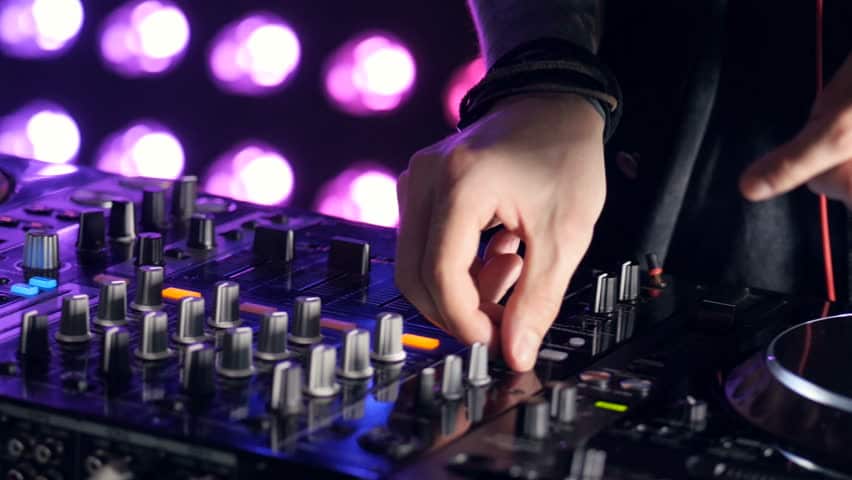
Used with faster and more precise crossfader movements, this is how DJs invent more and more sophisticated techniques to manipulate music on records. The “sleight of hand” technique requires two identical records and requires a sense of perfect timing so that short passage of rhythm can be repeated endlessly, constantly switching from the first to the second record. This technique requires you to “rewind” the passage in question very quickly while the other disc is playing, then reverse, and start over.
The “cut” of the crossfader is also the main weapon of another emblematic technique: the scratch. While giving complex rotational movements to a disc, we open the sound in cuts with fast and jerky rhythmic figures with the crossfader, to the sound of a drum passing on another disc. Very quickly, these extremely complex techniques will arouse the admiration and the emergence of a new sound: hip hop. Not all DJs will necessarily be seduced by these new techniques. But the DJ mixer will have to evolve to cope with the inflamed fader movements of these supercharged.
Build quality
Just like the ease of use is essential, make sure that the mixer allows you to use it frequently and over time. The buttons must be well fixed, and the materials of manufacture very solid to withstand possible shocks during handling. Also, some brands offer guarantees of quality. Ensure you compare models from the same range and different brands.
2-5 years of warranty coverage is a good number to start from. These models have better reliability and will last for several years.
Software and system requirements
This is an important criterion when you buy a DJ mixer since the software is essential for its proper functioning. Perhaps the most used are Serato DJ (usable in the Pioneer DJ DJM-S9), Rekordbox DJ (found in Pioneer DJ DJM-450), and Traktor Pro (also for the Native Instruments Traktor Kontrol Z2). Some of the software have a few days of trial, so you can decide. Remember, the mixer is just as important as the program itself.
It is quite common for the manufacturer of the DJ mixer to offer some type of license with specific software. As there are often alliances, it may be that the device works better with some programs than others. This is an aspect that you have to consider when you have to decide between a few models.
This factor also causes the price of equipment to skyrocket considerably. We may have different reasons for wanting our console to be connected to a software. For example, if we’re going to control playback by means with time-code, but we want to avoid buying and transporting the interface in turn. Or simply because we want our mixing console also to be an audio interface in case we want to use software and simplify wiring significantly by reducing it to a simple USB cable.
Inputs (connectivity)
Before buying a DJ mixer, you should also ask what devices can be connected to it. A DJ mixer, to fulfill its function, needs to have a sound source connected. The number of devices that can be connected and used at the same time will depend on the channels and inputs of the console. Next, we will see the devices that can most often be connected to a DJ mixer through its different inputs.
- Phono input: Through this input, we can connect a vinyl player, also known as a turntable. Many DJs use two turntables, one on each side of the mixer, to be able to mix the sound coming from two different vinyls. It is very common that they are also used to scratch, a very common technique in this area.
- Line input:Thanks to this input, you can connect a wide variety of devices, such as CD players, cassettes, MP3 players, laptops, tablets, or smartphones. Of course, it never hurts to take a look at the manufacturer’s specifications to see which devices it is compatible with.
- Microphone input: It is important to note that not all DJ consoles have a microphone channel. However, many models do incorporate it. Many DJs like to communicate with the audience during their shows. The simplest way to do this is through a microphone connected to the mixing console. If you intend to use it as well, you must make sure that the table model you choose has an input for this device. The most common microphone connections are jack and XLR.
- Headphones: Many mixing consoles have a headphone connection. Depending on the model, it will allow you to listen to the mix of the song before it sounds through the speakers.
- Other inputs: Some mixing consoles have ports to connect USB or SD cards. Good examples are the Pioneer DJ DJM-S9and the Mixars DUO MKII.
The number of channels

It is an important thing to know how many channels we are really going to need in our new DJ table. This is because the price factor of the mixer will be seriously affected by this parameter. Although you can find varying options on the market, most options focus on even numbers, with 2 or 4 channels being the most common. 2-channel mixers like the Numark M2 BLACK and the DJ Tech DIF-2S are the most common and cheapest. Meanwhile, 4-channel mixers like the Native Instruments Traktor Kontrol Z2 are often more expensive.
There are consoles with three channels (Behringer Mesa Dj Pro Dx626) or more than four (Behringer Mesa Dj Pro Vmx1000usb), to give just a few examples. Although we only mix from two or four main sources, having a complete extra channel (with gain and EQ) in which connecting an iPhone or auxiliary player can get us out of the odd trouble.
The current DJ table standard is 4 channels for the main sources, plus some extra stereo auxiliary input plus dedicated microphone input(s). Almost any decent console includes a dedicated mic input. And it would be normal for it to have EQ and could be assigned to the internal effects of the console.
The equalization
Except for the most radical scratchers, who will have the most critical element of their mixing console in the crossfader, the workhorse of the rest of DJs is the equalization. The equalizer standard includes three EQ controls (treble, midrange, and bass) plus one for filtering. And it must be said that the cutoff frequencies of each model and the modification ranges on the frequencies affect the final sound of our mix very significantly. Also, not all EQs attenuate the signal of each band until the channel is completely silenced when we lower all three.
The possibility of incorporating “total kill” or “kill” buttons for each frequency band is quite important, depending on our mixing style. In our opinion, the channel filter is essential, the most common configuration being low-pass on one side and high-pass on the other. Although, there are models with 4 bands of equalization, which allow a smoother and more perfect control over the mix, such as the Allen Heath Xone 92. Most of the models presented in this review have 3 bands of equalization. Examples are the Allen & Heath XONE:23 and the Pioneer DJM250MK2.
Effects
The more the years go by, the more technology brings its share of novelties on the material, so the brands sell their new models. Thus, digital multi-effects have entered DJ mixers to further expand the sound arsenal. It’s a whole panoply of reverb, delay, chorus, flanger, phaser, echo loop, resonant filters, saturation, ring modulation, etc. We do not count the number of possible effects, more or less useful, to appear on DJ equipment. Mixing with effects is a must have for the modern DJ. The effects modules integrated into the latest generation equipment are of good quality. And you can decide if you want to have them integrated into each reproduction source, for example, in CDs. This will allow you different effects for each of the songs, or on the contrary, have them integrated into the table. In the latter case, the effects can be applied to each of the channels or to the master through a switch, but normally we will only have one effect available. Tables with two processors offer a significant price jump. There are consoles capable of directing the signal from the channels to the outside through a pair of outputs, to process this in an external effects module. This possibility is undoubtedly interesting and versatile, and you should contemplate it whenever your economy allows it.

On more sophisticated models, two sends per channel (individually switchable between post and pre-fader) can be made to external processors. And there are two independent, fully equipped return channels for external processors.
There are tables with more than one effects processor and signal routing systems. These can send as many signals as we want for processing in any combination. They are often high-end models.
Dimensions and weight
Are you a DJ who will regularly transport the equipment? Or rather an enthusiast who works mainly in a recording studio? Depending on your use, it is essential to choose the dimensions of your equipment well, to make sure that you can transport it easily if necessary. If you’re conscious of the weight and dimensions, and want a transportable model, choose a model such as the Pioneer DJM250MK2 or the Allen & Heath XONE: 23.








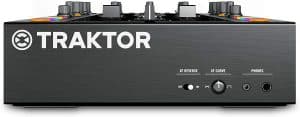
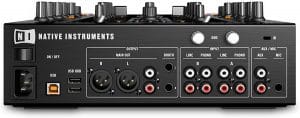

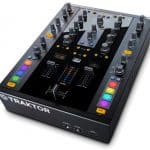






























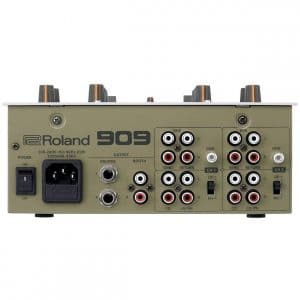
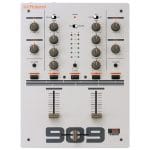
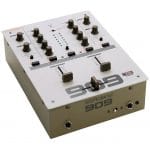


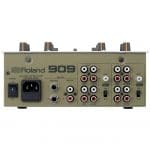










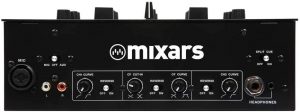
















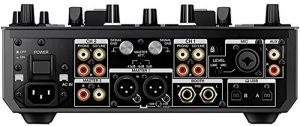















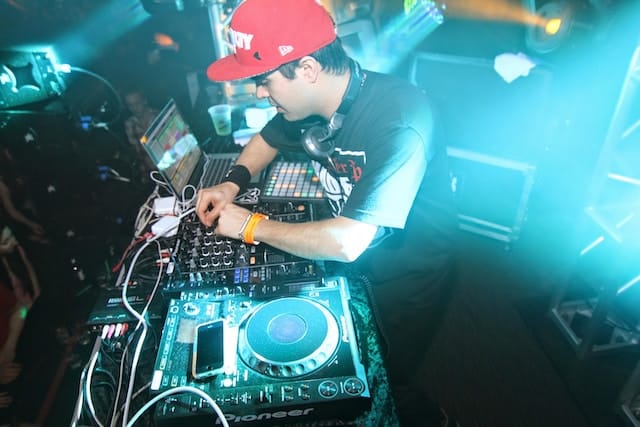





I appreciate the information provided about different types of DJ mixers and their functions. It’s helpful to know the differences between a DJ mixer and a DJ controller. I also like that the article mentions the importance of build quality and software compatibility when choosing a DJ mixer. Overall, a thorough and informative guide for anyone looking to buy a DJ mixer.
This article provides really helpful information for someone like me who is just starting out as a DJ. I didn’t realize that there were different types of DJ mixers and that they have different features. The comparison between DJ mixers and DJ controllers was also very informative. I’ll definitely keep these factors in mind when I’m ready to buy a DJ mixer. Thanks for the great guide!